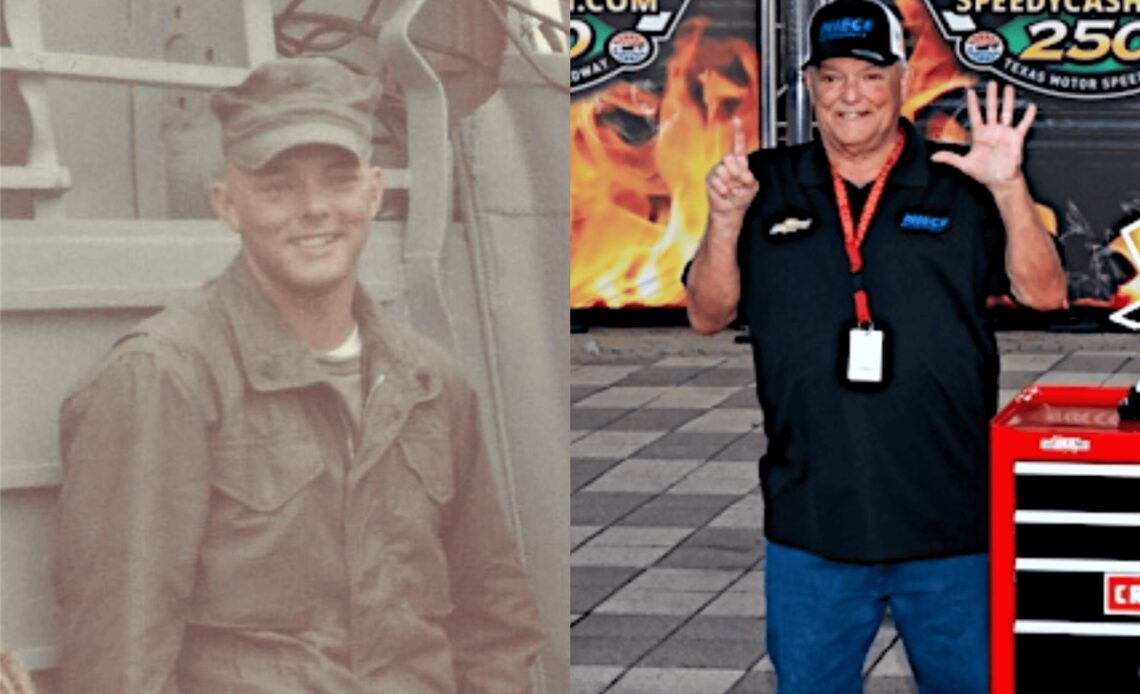This article is dedicated to the Marines of Lima Company, Third Battalion, Third Marines from 1967-68.
Any fan that has watched the NASCAR Craftsman Truck Series in the last five years has heard of his likeness before.
His team, Niece Motorsports, has fielded a wide-and-famous plethora of names such as Carson Hocevar, Ross Chastain, Kyle Larson and even Travis Pastrana. With a combined total of five wins, 33 top fives, 74 top 10s and even four Truck Series playoff appearances, it’s no wonder you’ve likely heard of them.
But the next time you see their haulers at the racetrack, look up. In the sea of banners that each Truck Series team waves above their trailers waves four bright red flags of the United States Marine Corps Globe and Anchor.
They belong to Niece Motorsports owner Al Niece, who, at one time in a faraway country forever etched into American history, was known as Sergeant (Sgt.) Niece of Lima Company, Third Battalion, Third Marines.
And his memories from that time are still vivid.
It was 1966. Niece had only recently finished high school in Albuquerque, New Mexico, and gotten involved with a local group of hotrodders in his illegal 1953 Chevrolet Studebaker before moving to Austin, Texas. Shortly after, he, like so many other young Americans during that time, received a draft notice for the conflict in Vietnam. His country had called him for service.
But Niece wasn’t surprised, nor was he upset.
“I had a feeling [the draft] was coming,” Niece told Frontstretch. “I had lost my student deferment. […] [I felt] indifference.”
Niece didn’t want to join the Army or any other branch. No, if he had to go, he was going to be with the best.
“If I’m going to go, I want to be with the A-Team,” Niece remembered. “I wanted to be where the action was, instead of being in the Army, Air Force or even the Navy. I did not want to be on the sideline. I wanted to be the point of the spear.
“And we sure as hell were.”
With that, he decided to join the United States Marine Corps.
Shortly after, Niece shipped out to boot camp at Camp Pendleton in June 1966. For those that are picturing scenes of R. Lee Ermey stomping around while screaming obscenities at new recruits in a long barracks hall, you aren’t far off.
“There were some parts of [Full Metal Jacket] that were very realistic,” Niece said. “And some parts that weren’t. I thought, for the most part, the boot…
Click Here to Read the Full Original Article at …

